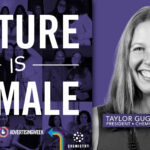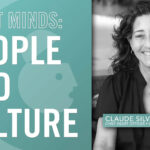Storytelling has always been a powerful way to capture attention, convey meaning, and make people feel something. In today’s marketing landscape, it’s not just a creative flourish—it’s a business necessity. Consumers are no longer swayed by features and benefits alone. They want connection. They want purpose. They want to see themselves reflected in the brands they support. And that’s exactly what storytelling can deliver.
But translating storytelling from concept to execution takes more than a good idea. It requires a thoughtful, consistent approach—one that blends emotion, strategy, and authenticity across every touchpoint. So how do you actually build storytelling into your marketing? Let’s explore—starting with a hypothetical example of how a brand might get it right.
Meet “Evermoor”—A Sustainable Skincare Startup
Imagine a small, direct-to-consumer skincare brand called Evermoor. They don’t have the ad budget of legacy beauty brands, but they do have a compelling story: the company was founded by a former botanist named Nadia who left the cosmetics industry after learning how many synthetic ingredients were harming both skin and the environment. She started crafting her own products using local, regenerative plants, and after seeing dramatic results in friends and family, she turned it into a business.
That story became the heartbeat of Evermoor’s brand. Instead of simply listing product benefits—hydrating, anti-aging, pH-balanced—they led with a narrative: Nadia’s mission to make skincare that heals you and the planet. That emotional core set them apart from the competition.
They built their first campaign around the journey: a video showing Nadia harvesting herbs at dawn, testing formulas in her garage, and talking candidly about her decision to walk away from a corporate career to pursue something more meaningful. The campaign was raw, heartfelt, and beautifully shot. It didn’t feel like a product pitch—it felt like a personal invitation.
What Brands Can Learn from Evermoor
It all starts with understanding your own narrative. Before crafting content for campaigns or social media, you need to be clear on who you are. What’s your origin story? What motivates your team to show up every day? What impact are you trying to make in the world? Your brand’s story serves as the foundation for every message you send and every connection you hope to build. Evermoor didn’t launch with a slick tagline; they led with purpose and let the story do the heavy lifting.
Equally important is knowing your audience. Evermoor understood that their customers were savvy, sustainability-minded millennials and Gen Zers who were skeptical of greenwashing and exhausted by chemical-heavy skincare. By aligning their message with the values and concerns of that audience, Evermoor made their story feel not just personal—but relevant.
And like any good narrative, Evermoor put a real person at the center. Nadia wasn’t a mascot—she was the founder, the formulator, and the face of the brand. Audiences connected with her vulnerability, her expertise, and her conviction. Her presence made the story human.
Structure also played a role. The Evermoor campaign followed a classic arc: a founder disillusioned with an industry, a challenge to create something new, and a triumphant moment of launch and early success. There was conflict, resolution, and emotional payoff—all wrapped around a product that felt like a natural extension of the story.
Just as importantly, Evermoor adapted their storytelling across platforms. On Instagram, they shared behind-the-scenes clips of Nadia making batches by hand. On their website, a long-form blog post detailed her journey. Their emails told mini-stories of customer transformations. Each channel supported the narrative without repeating it verbatim.
They also backed up the story with data. Testimonials spoke to real results. Packaging stats highlighted their zero-waste manufacturing process. Their blog included before-and-after skin health metrics. They balanced emotion with evidence.
Most importantly, the storytelling didn’t end after the launch. Evermoor built narrative into every stage of the customer experience—from how products were introduced, to how they followed up with customers, to the way they celebrated community wins. They encouraged buyers to share their own skincare journeys, even featuring user videos and personal stories in future campaigns. Customers became co-creators of the brand’s evolving narrative.
Storytelling That Sticks
The Evermoor example might be fictional, but it reflects what real-world brand storytelling looks like when done well. It’s not performative or preachy—it’s intentional, authentic, and emotionally resonant. It connects the why behind a product to the who it serves.
At its core, marketing is about making people feel something. It’s about more than attention—it’s about connection. And nothing connects quite like a good story. When you approach storytelling with purpose, clarity, and consistency, you don’t just market your brand—you invite people into a shared narrative. One that they’re excited to be part of. One they’ll remember.











